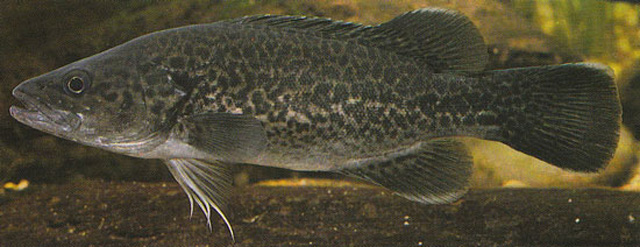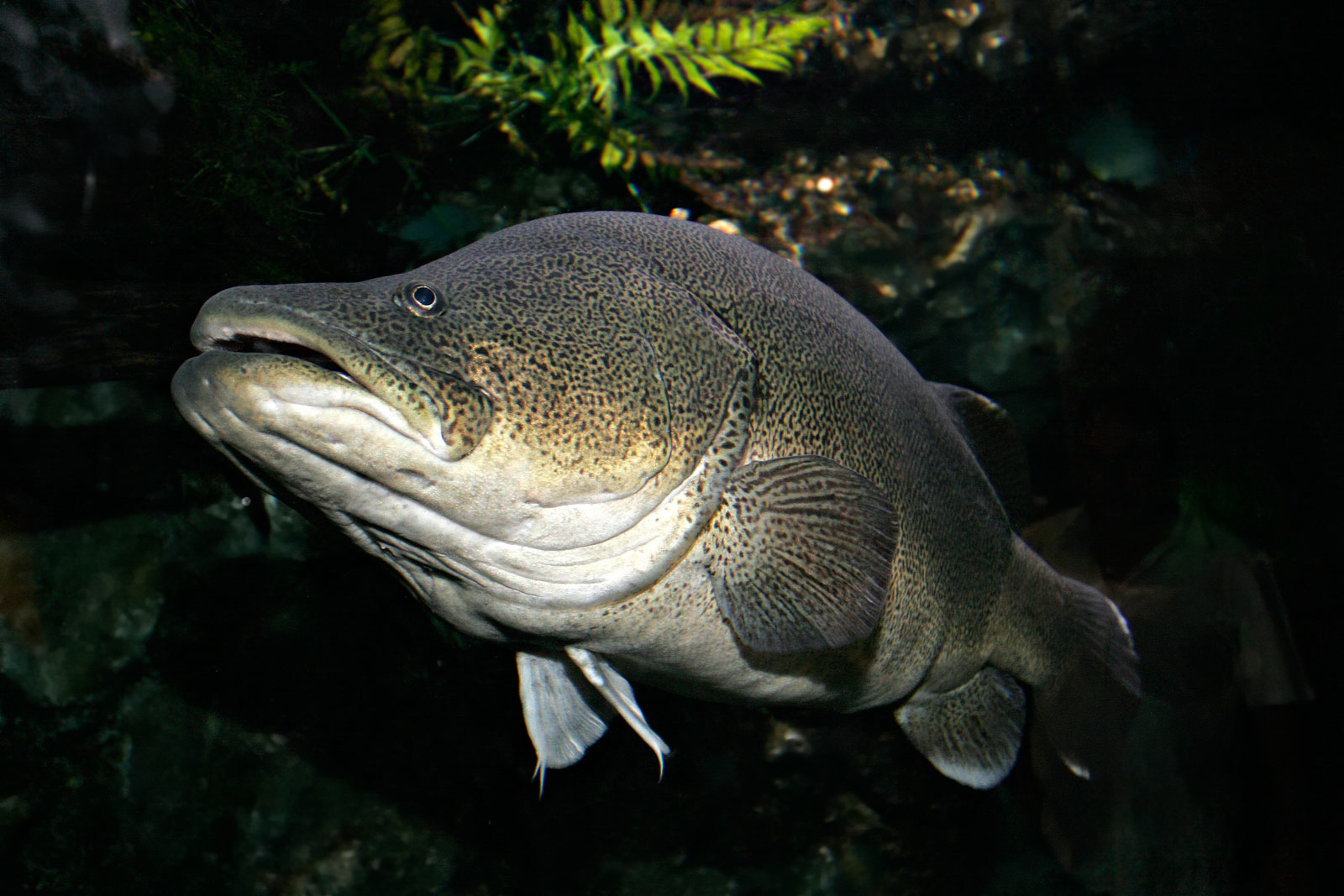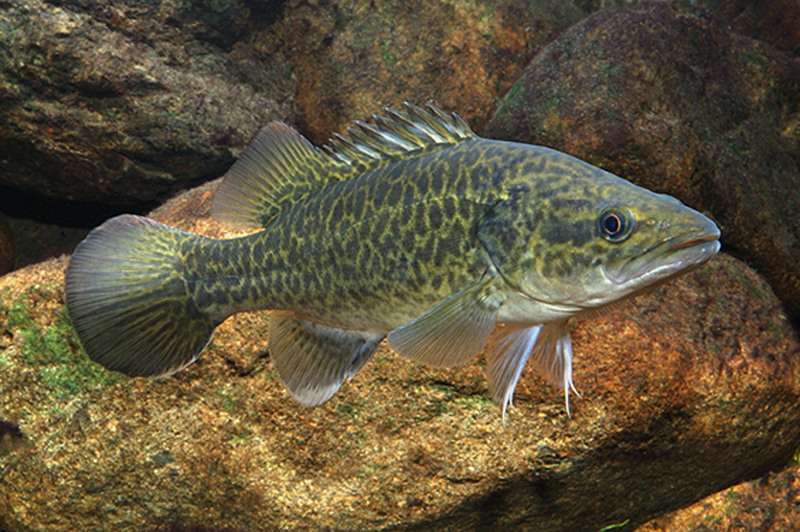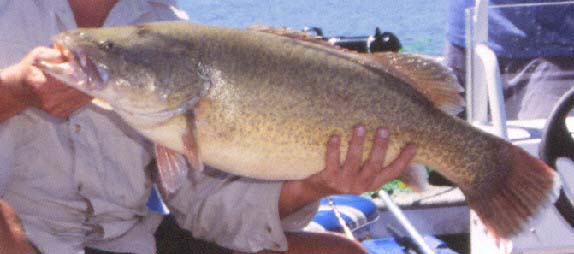
Maccullochella peelii peelii and M. peelii mariensis
FAMILY
Percichthyidae
TAXONOMY
Maccullochella peelii peelii Mitchell, 1838, Peel River, New
South Wales, Australia. M. peelii mariensis Rowland, 1993,
Mary River, Queensland, Australia.
OTHER COMMON NAMES
English: Goodo, ponde.
PHYSICAL CHARACTERISTICS
Total length (both subspecies) 80 in (180 cm); weight 250 lb
(113 kg). Body large, elongate, and heavy. Body color ranges
from olive to cream, occasionally yellowish, with reticulated
mottling of dark gray or green along body and onto fins. Fins
brownish with white edges, pelvic fin is white. Dorsal fin positioned
posteriorly along back. Caudal peduncle of Mary River
cod is shorter and the pelvic fins are longer than in Murray
cod. Caudal fin is rounded in both subspecies. There are 10–12
spines and 13–16 soft rays in dorsal fin, 3 spines and 11–13
soft rays in anal fin, and 19–20 soft rays in pectoral fin.
DISTRIBUTION
Murray cod: Murray-Darling River system of Australia; absent
from upper reaches of these rivers and from the smaller
tributaries; its range has shrunk because of habitats destruction.
Has been stocked elsewhere. Mary River cod: River
Mary in Queensland, Australia, although attempts have been
made to establish populations elsewhere, such as the Brisbane
River.
HABITAT
Both subspecies favor structure, mainly submerged logs, rocks,
or undercut banks, as well as deeper holes in turbid, slow flowing,
or clear, rocky reaches of rivers.
BEHAVIOR
Territorial and will defend a piece of
HABITAT
, usually a hole or
some form of structure. Those in lakes will defend a larger
area. Juveniles are migratory.
FEEDING ECOLOGY AND DIET
Carnivorous as adults and older juveniles, feeds upon macroinvertebrates,
fishes, amphibians, reptiles, birds, and small terrestrial
mammals that enter water. Young juveniles feed upon
zooplankton.
REPRODUCTIVE BIOLOGY
Both subspecies mature in about five to six years and may live
to 60 years. Courtship and spawning occurs during the austral
spring and early summer. Eggs are demersal and guarded by
the male. Hatching occurs in one to two weeks to coincide
with flooding that brings food for the post-larvae.
CONSERVATION STATUS
The Murray cod is not listed, but is vulnerable to habitats destruction
and overfishing. The Mary River cod is classified as
Critically Endangered by the IUCN.
SIGNIFICANCE TO HUMANS
Culturally important to aboriginal peoples of Australia. Formerly
important as commercial species, with overfishing and
HABITAT
destruction leading to its decline. The Murray cod is an
important but highly regulated game fish.
Photo Gallery of - Murray cod and Mary River cod





 Animalia Life
Animalia Life